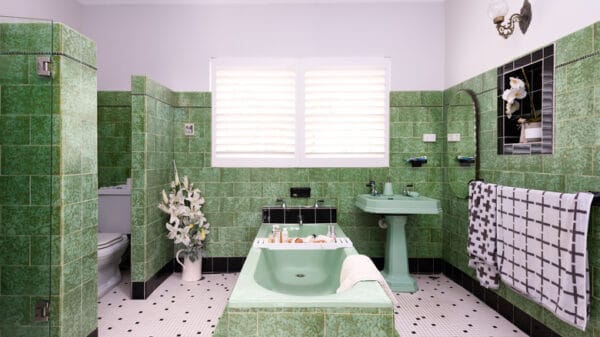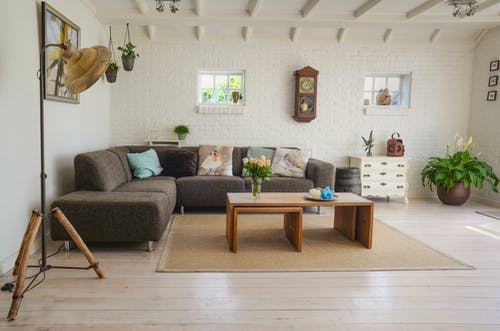Conversations centered on architecture often stay pinned to the discipline in a very strict way, very rarely looking at the creative process that is inherent to this work.
But today, here on TechSling, we’ll try to go the extra mile and consider the extensive cross-pollination that can take place when an architect, or a group of architects, is willing to take their inspiration from many different sources and allow that inspiration to inform their designs and planning.
Our guest, architect Rita El Kouhen, has been in the industry for over ten years now. She originally worked for a notable architecture firm in Paris, later relocating to New York City to work for an award-winning firm.
While known for her architectural expertise and talent, El Kouhen is constantly seeking new input, new ideas, and new ways to do things better.
This brings us to El Kouhen’s view on expanding the traditional boundaries of architecture itself:
“Architecture is not limited to its own field. There are many interactions with different disciplines and professionals in the design field. It’s crucial to always be on the lookout for new inspiration and be multidisciplinary.”
We’d like to break that statement down bit by bit, first talking about potential sources of inspiration for architects, then moving on to the value of having multiple skill sets in the current professional landscape.
Looking for inspiration
Beginning with the subject of unconventional sources of inspiration for architects, these can come from just about anywhere. Some can even come from rapidly advancing technologies
As an example, El Kouhen mentioned how relatively recent advances in technology have made it much easier to create specific patterns or materials, and that the possibility of creating complex shapes can be a form of inspiration that didn’t exist a few decades ago.
She also explained how many architects look to the architecture of the past as a source of inspiration.
Now, this doesn’t mean that certain contemporary architects are hoping to regress to older methods of construction or structural design, but rather that design elements used in different periods of architecture can inspire and can also offer a means by which the architect can pay respect to a specific location’s (or client’s) heritage.
But as for El Kouhen’s sources of inspiration that reach beyond architecture, she mentioned one that has given her a unique way of looking at each project: music.
“Personally, I read quite a lot about the correlation between music and architecture. Music is defined by its harmony and rhythm. It’s interesting to make a connection with architecture and think of design as melody. When materials and design are combined well, the result creates a balance and a harmony that is aesthetically pleasing.”
This point of comparison with music is particularly interesting.
As trained musicians already know, many forms of music rely heavily on structure and the interplay between many different elements, from rhythm, melody, and harmony to different instruments and their individual frequency ranges and natural timbres.
It’s not difficult to see how this relates to architecture, with its many different considerations that go well past simple structural integrity and currently trendy aesthetic features.
Using elements of the visual arts
Another potential source of inspiration for many different architects that may seem nontraditional to some is the visual arts, here defined as the fine arts, i.e. any variety of painting, sculpture, and video installation work.
Like music, visual art can have either a direct or indirect influence on architecture. El Kouhen spoke to the times when a specific period in art history has had a serious impact on a number of architectural designs:
“When designing a building, there’s a lot of effort put into how the space will make someone feel, not just how it will look. Many architects have been inspired by movements like Cubism to develop a design. In this case, the design process is completely different. It is about building a strong visual element that will stand the test of time, almost like it’s making a statement.”
When the priority for a design becomes the visual and emotional elements, both the process and certainly the result will be very different than, for example, a design that focuses solely on practical utility.
One very specific way that art can influence an architect’s decisions is in terms of lighting, and El Kouhen shared a story that illustrates this point very well.
During an international workshop that had an emphasis on innovation, El Kouhen developed an elaborate design for a building that very much focused on creative uses of light based on each area within the building.
For example, openings were placed in strategic locations, and each opening was designed in a highly specialized way, so as to repurpose that light in the best possible way for each room.
For what El Kouhen considered to be the heart of the building, a large glass atrium was placed to bring in lots of light and provide a view of the other levels of the building.
In contrast, an opening for the library diffused the light, which would naturally be more comfortable for someone sitting down to read.
As a way of transition to our next section, none of this planning would have been possible without extensive knowledge of graphic design and 3D modeling, skills that carry a great deal of value in contemporary architecture.
The value of graphic design in architecture
Now we’ll move on to how an interdisciplinary approach applies to architecture today. Keep in mind that these other disciplines can certainly provide inspiration to architects as well, but we will be focusing much more on the practical benefits of such an approach.
At first glance, graphic design has its own visual discipline and is far removed from architecture and the precision of architectural planning.
But this is a misconception based on a very generalized view of graphic design as focusing on physical media and online visual elements for various brands and products.
As El Kouhen explains, graphic design is an incredibly valuable tool for architects, especially for architects working in the commercial and retail space.
“Graphic design is a way to communicate and present your project to your clients and to the public. When an architect is capable of juggling different software and mastering graphic design, it becomes easier to have your projects and ideas be creative, stimulating, and well-received.”
You’ve almost seen examples of these materials before. Perhaps a nearby property lot is currently undergoing construction and has provided a number of large signs in front of the site that show renderings of the finished project.
Architects use very similar materials when presenting their ideas for a project to a client. It’s one thing to show clients highly technical plans for a project, but only architects are going to be able to properly digest and consider those plans.
Much more visual representations of the structure or structures in question are more immediate and can even make the process of revising the existing plans much, much simpler and straightforward.
El Kouhen sees graphic design as an aspect of the many different forms of communication that are required of an architect.
Just imagine how useful these kinds of visuals can be when an architect needs to share plans with the general public, maybe for a public building or something similar.
In this case especially, it important to have many clear visuals of what the end result will look like, maybe even including some 3D renderings of the building to show it off from many different angles.
Appropriately enough, El Kouhen has also trained in 3D modeling, recognizing the value it adds to various presentations and the planning process in general.
On having multiple skill sets
In general, many different sectors of the job market that have traditionally been very specialized, are now seeing a rapidly growing demand for professionals who are experts in their craft but who also know how to do much more.
The name of the game today is multiple skillsets, even in architecture, as El Kouhen can testify to:
“The market is changing quickly and the demand for multiple skillsets is increasing constantly. The market is looking for architects who are able to communicate well with different professionals and make quick decisions. With all the design technologies that are constantly evolving, it is very important to stay ahead and be open to learning. Skill sets and multitasking are key to be competitive and successful in the market.”
Part of this relatively new job market demand is the practical side that we’ve discussed in detail in this article. It’s reassuring to know that someone on your team can handle many different tasks as needed and communicate effectively with many different people.
But the other side is how multiple skill sets and disciplines can give a professional a much more flexible and dynamic mindset.
When inspiration comes from many different places and an employee can apply that inspiration to many different practical skills, an interesting and innovative result is just around the corner. Keep this in mind next time you’re looking for an answer to a difficult problem.
I'm a long time fan of tech innovation, especially its capacity to cross over into the realms of art and social justice. The paradigms are constantly changing, and we need to change with them.























































































































































































